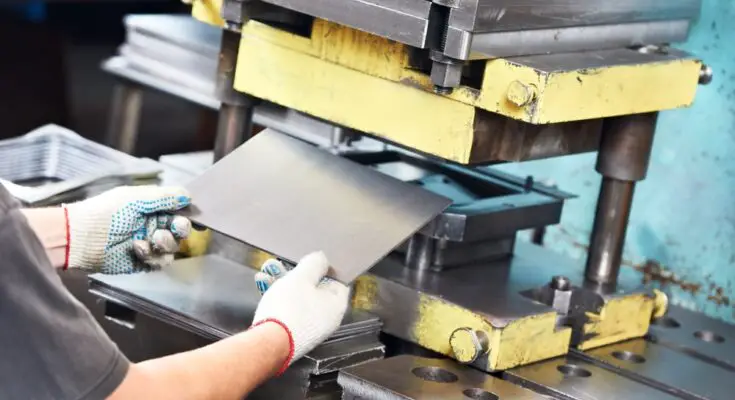Metal stamping is an essential process in manufacturing, providing a practical and efficient method for shaping metal sheets into desired forms. For beginners, understanding how this intricate process works lays the foundation for appreciating its significance in various industries. This guide will help beginners understand the metal stamping process.
Introduction to Metal Stamping
Metal stamping involves using a press machine and dies to cut, form, and shape metal sheets into specific components. Commonly used in industries such as automotive, electronics, and aerospace, this process provides the precision and scalability required for manufacturing small, intricate parts or large components.
Metal Stamping Processes Explained
Basic stamping involves techniques such as blanking, bending, embossing, coining, and drawing. Blanking cuts the metal sheet to size while bending alters the material’s shape without cutting it. Embossing creates a raised or recessed design, coining refines the metal’s surface with high pressure, and drawing forms the metal into deep shapes, such as a cup or cylinder. Each of these techniques plays a distinct role in achieving the desired product specifications.
Materials Commonly Used
Steel, aluminum, and copper are popular choices for metal stamping. Steel remains a favorite for its strength and affordability, while aluminum’s lightweight properties make it valuable for applications such as automotive and aerospace manufacturing. Copper, favored for its conductivity, often appears in electrical components. Selecting the right material largely depends on the end-product requirements and its intended application.
Metal Stamping Across Industries
Metal stamping supports various sectors. Automakers use it to manufacture car body panels, brackets, and parts. Electronics companies rely on it for components like connectors and frames. Aerospace industries employ it for high-precision parts, and medical industries turn to metal stamping for creating surgical tools and implantable devices. Its versatility allows industries to meet complex demands with accuracy and efficiency.
Advantages and Disadvantages
Metal stamping delivers high production rates, cost-effective mass production, and repeatable quality. However, high initial tooling costs and process limitations for extremely thick or brittle materials may pose challenges. Understanding these factors helps businesses evaluate if metal stamping aligns with their needs.
Choosing the Right Metal Stamping Process
Identify the specific needs of your product, such as design complexity, production volume, and material type. Consult experts who can guide the selection process. Exploring in-die assembly might provide added benefits by combining multiple operations into a single step, improving efficiency. Take time to evaluate prototype runs and refine designs to achieve the best possible final product.
Future Trends in Metal Stamping Technology
Advancements in automation, smart sensors, and AI-driven precision are set to redefine metal stamping. Techniques like servo presses, which offer greater control and flexibility, are gaining traction. The growing focus on sustainability has also led to the development of materials and processes that minimize waste. Staying informed about these innovations positions manufacturing businesses to remain competitive.
Metal Stamping for Beginners
Metal stamping is the support of many successful manufacturing processes, offering precision, reliability, and scalability. With a clear understanding of its processes, materials, and applications, beginners can confidently explore this field while making informed decisions. If you’re ready to optimize metal fabrication or unlock new possibilities, connect with professionals who can guide you through customized solutions and innovative technology trends.



